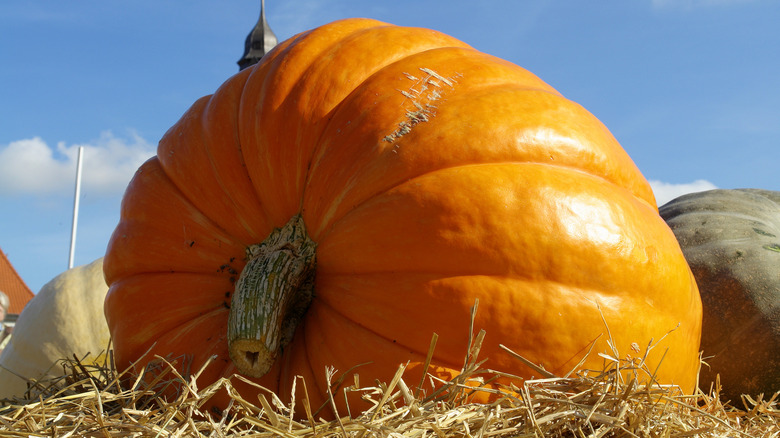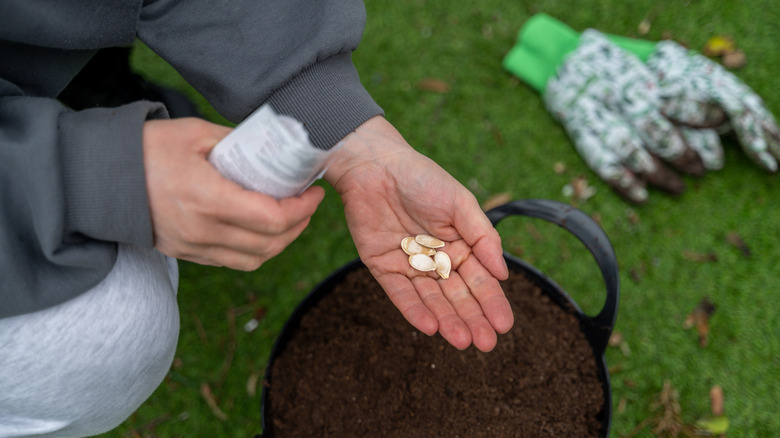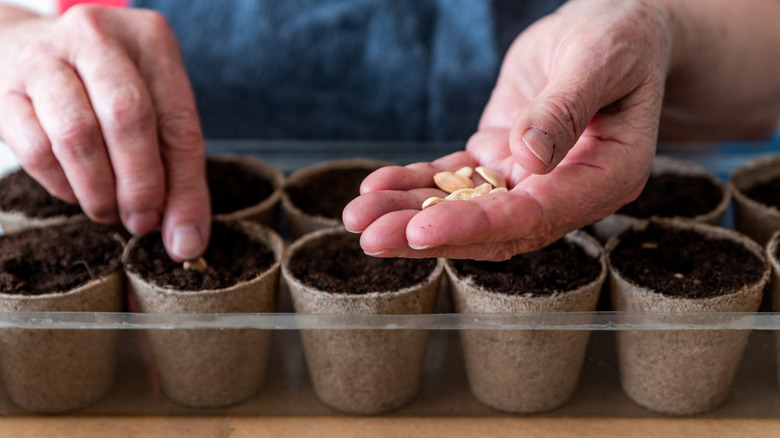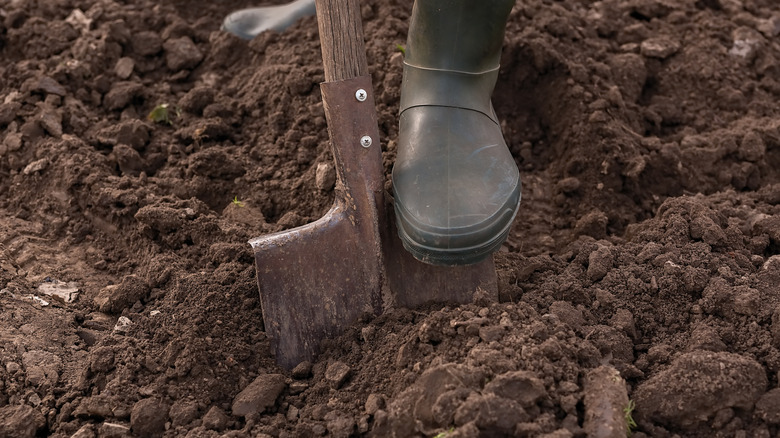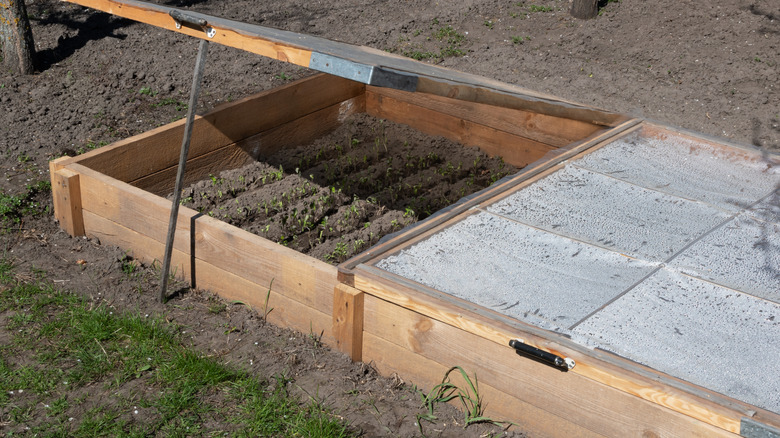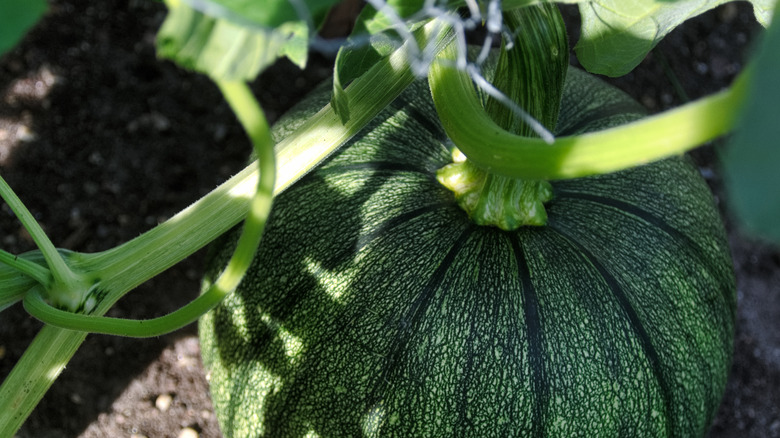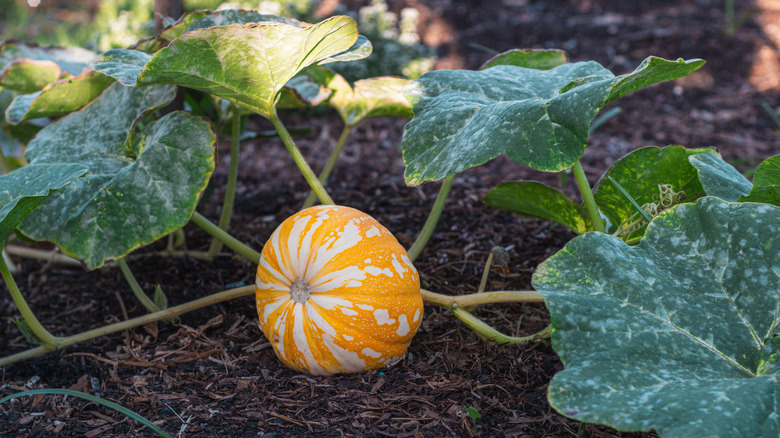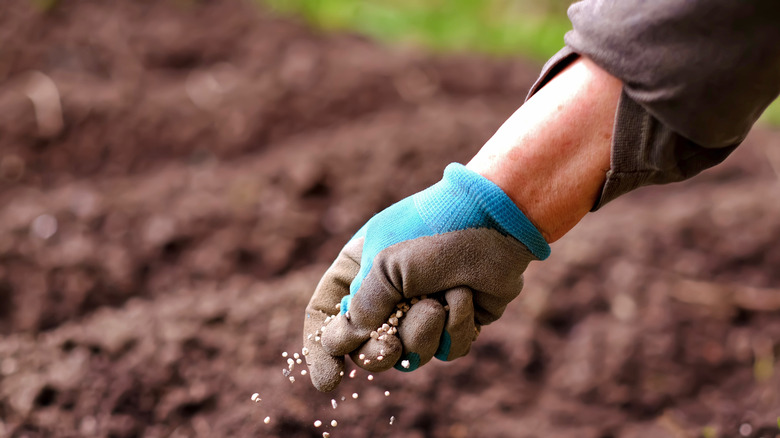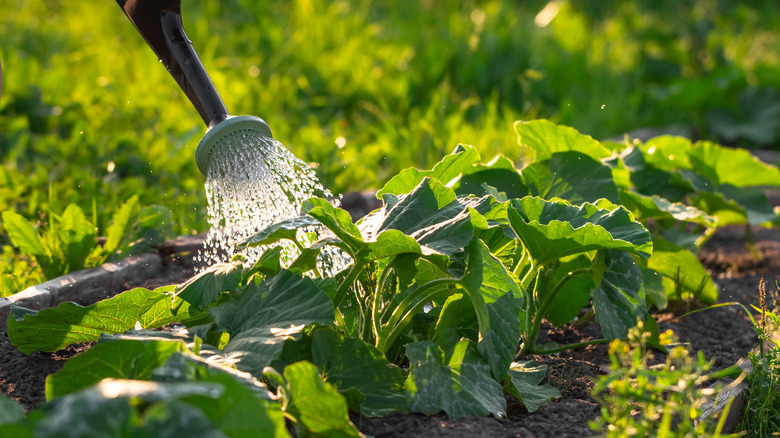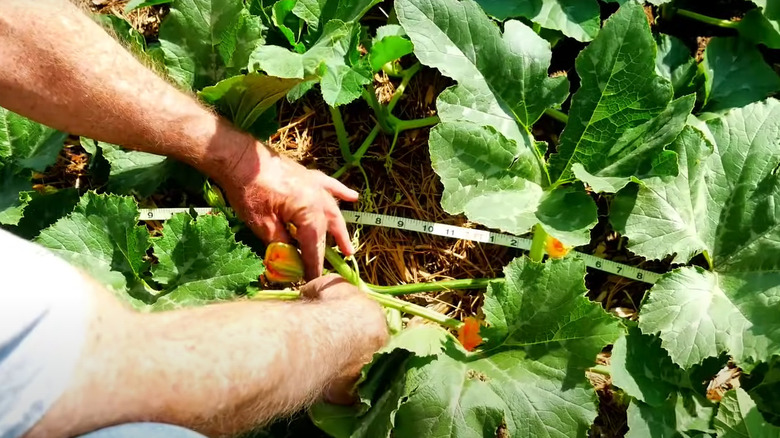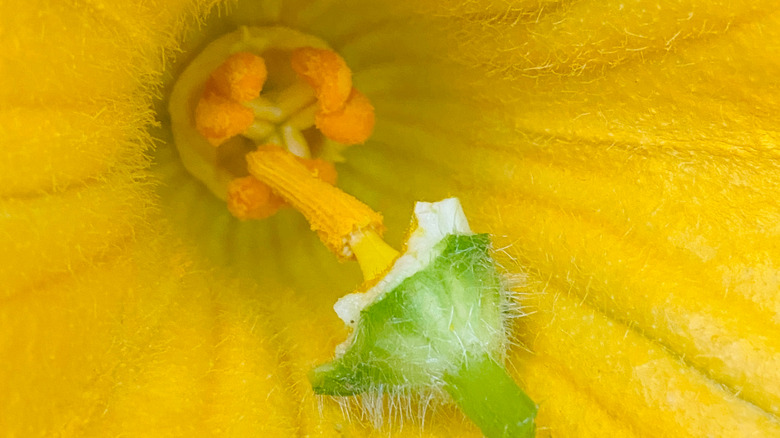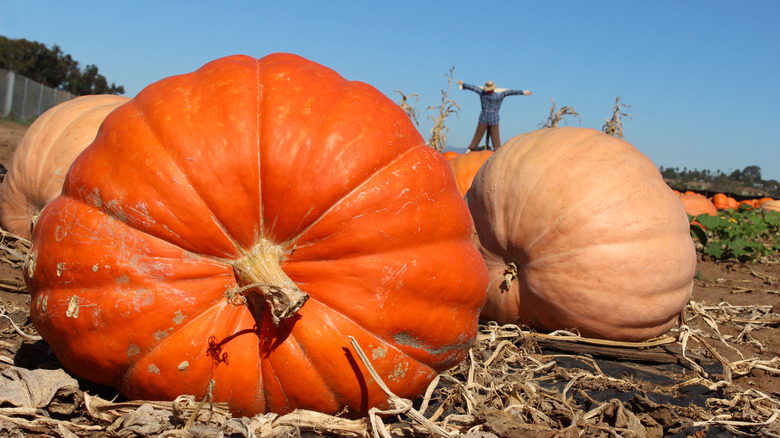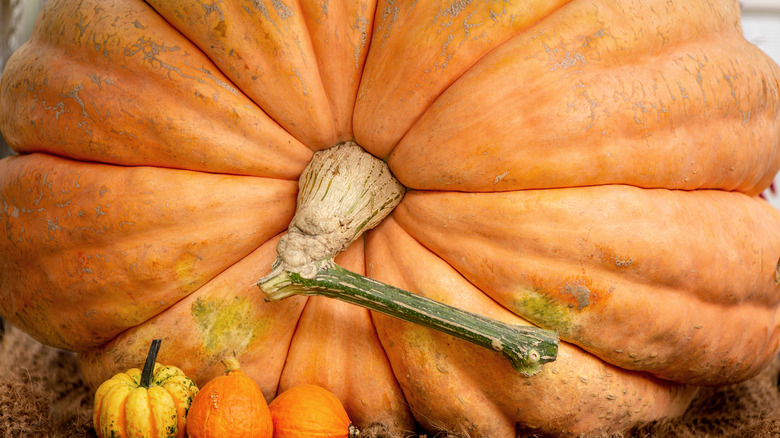12 Tips To Grow Massive & Fair-Worthy Pumpkins
Whether you plan to enter your local fair's contest or want a fun and rewarding garden project, you can grow a giant pumpkin in your own backyard. Giant pumpkins (Cucurbita maxima) are distinct from those used for pies and jack-o'-lanterns. They have been selected and bred to grow to an impressive size. With the right care, giant pumpkin varieties will grow to weigh hundreds, and sometimes thousands, of pounds.
Of course, growing such an exceptionally large fruit is a demanding process, but it doesn't have to be a complicated one. There are several tips and tricks to give you the upper hand in growing the perfect pumpkins. Simply starting the seeds indoors will give you a head start on the growing season. Common problems like harsh sunlight can be solved with easy DIY projects, while harsh cold can be kept out with cold frames. All of these tips will set you on the right track to grow a massive, fair-worthy pumpkin.
Choose the right seeds
You can't grow giant, fair-worthy pumpkins from just any pumpkin seeds. Most giant pumpkin varieties are bred to win competitions. These seeds can be purchased from local giant pumpkin growers or online sellers such as the St. Croix Growers Association. Seeds of older varieties, like Atlantic Giant and Big Max, are commercially available, but they don't grow as large as those of newer varieties. These grow to about 200 to 300 pounds, while some newer varieties can grow upwards of 1,000 pounds.
Start the seeds indoors
Pumpkins are a warm-weather crop, so starting seeds indoors from late April to early May gives them a head start on the growing season. Filing the edges of the seeds with a nail file and soaking them in water for 1 hour before planting will improve germination time. Pumpkin seeds germinate fastest at about 85 degrees Fahrenheit. Then, you can transplant the seedlings 2 to 4 weeks after the last frost.
Prepare your plot
The soil in which you plant your pumpkin has a huge impact on its growth. Pumpkins prefer acidic to slightly alkaline soil. The ideal pH level is between 6 and 7.5. Your pumpkins' soil should also be well-drained and rich in organic matter, about 3 to 10 percent. Heavy soils like clay and loam won't get you the big results you want. Of course, giant pumpkins also need plenty of space. You'll need to set aside at least 400 square feet of your yard for each plant.
Use cold frames to maintain the perfect temperature
While you're waiting for your seeds to germinate, it's a good idea to install one cold frame for each seedling you intend to plant. Cold frames help delicate seedlings grow strong and healthy by protecting them from cold, wind, and rain. They can be purchased, or you can DIY a cold frame at home. Once the seedlings are established and the weather has warmed, you can the cold frames.
Protect your pumpkins from the sun
While pumpkins thrive in warm weather, harsh sunlight can cause their outer skin to dry and crack. A simple shade structure you can make at home will help keep them warm but sheltered. You can create a shady shelter by draping a sheet over your plants. You can also make a raised shelter using shade cloth secured to posts.
To mulch or not to mulch
Mulching can be a useful tool when growing giant pumpkins, but choosing whether to mulch your pumpkin patch and what mulch to use depends on your garden's unique needs. Mulch retains moisture, adds nutrients to the soil, and can prevent weeds from growing in your lawn. However, mulching tacks on additional costs and maintenance to an already intensive project. Some mulches, like straw, may also cool the soil and slow growth.
Keep your pumpkin fertilized
It should come as no surprise that giant pumpkins need a lot of nutrients to grow to such an exceptional size. Once your plants are established, you should start fertilizing them once per week with a balanced, low-nitrogen fertilizer. It is still possible to overfertilize giant pumpkins, so apply it sparingly. When the plants begin to fruit, you should also start supplementing with calcium and potassium.
Water, water, water
Just like fertilizer, a giant pumpkin needs plenty of water. They can take up to 500 gallons of water per week in late summer while they grow rapidly. They need less water earlier in the season, but still require frequent watering. Watering when the top inch of soil is dry ensures a well-quenched plant. You'll likely end up watering every 1 to 2 days in the summer and every 2 to 3 days as temperatures cool.
Don't skip pruning
A pumpkin plant's primary and secondary vines work to bring water and nutrients to the pumpkin. However, tertiary vines limit the pumpkin's growing potential. Tertiary vines are the smallest vines on the plant and grow from the secondary vines. As they appear later in the season, they take nutrients away from the fruit. Cut them away, or your pumpkin will be stunted.
Hand pollinate your pumpkins
Nearby bees will visit your plants, but if you want to ensure your plants produce fruit, you'll need to do it yourself. Pumpkins have male and female flowers. The female flowers have a bulge between the flower and the stem. If pollinated, these bulges will produce pumpkins. To pollinate them, you can use a cotton swab, paintbrush, or similar tool to take pollen from male flowers and dab it onto the stigma of the female flowers. Or, simply peel the petals away from a male flower rub the pollen from the stamen onto the female's stigma.
Reposition but don't roll
You might be tempted to roll your pumpkin periodically to promote a rounded shape. With giant pumpkins, though, it's not recommended to do so. Because they're so heavy, rolling a giant pumpkin may damage the stem. However, as your pumpkin grows, you can gently position it at a right angle to the stem to reduce stress on the vine and give the shoulders more space to grow.
Cut out the competition
The fewer pumpkins there are on each plant, the more likely those pumpkins are to grow to their full potential. As your plants begin to produce pumpkins, remove those that are growing least aggressively, leaving 1 to 2 pumpkins on each plant. The strongest pumpkins will receive all the nutrients, allowing them to become massive, fair-worthy beauties.
